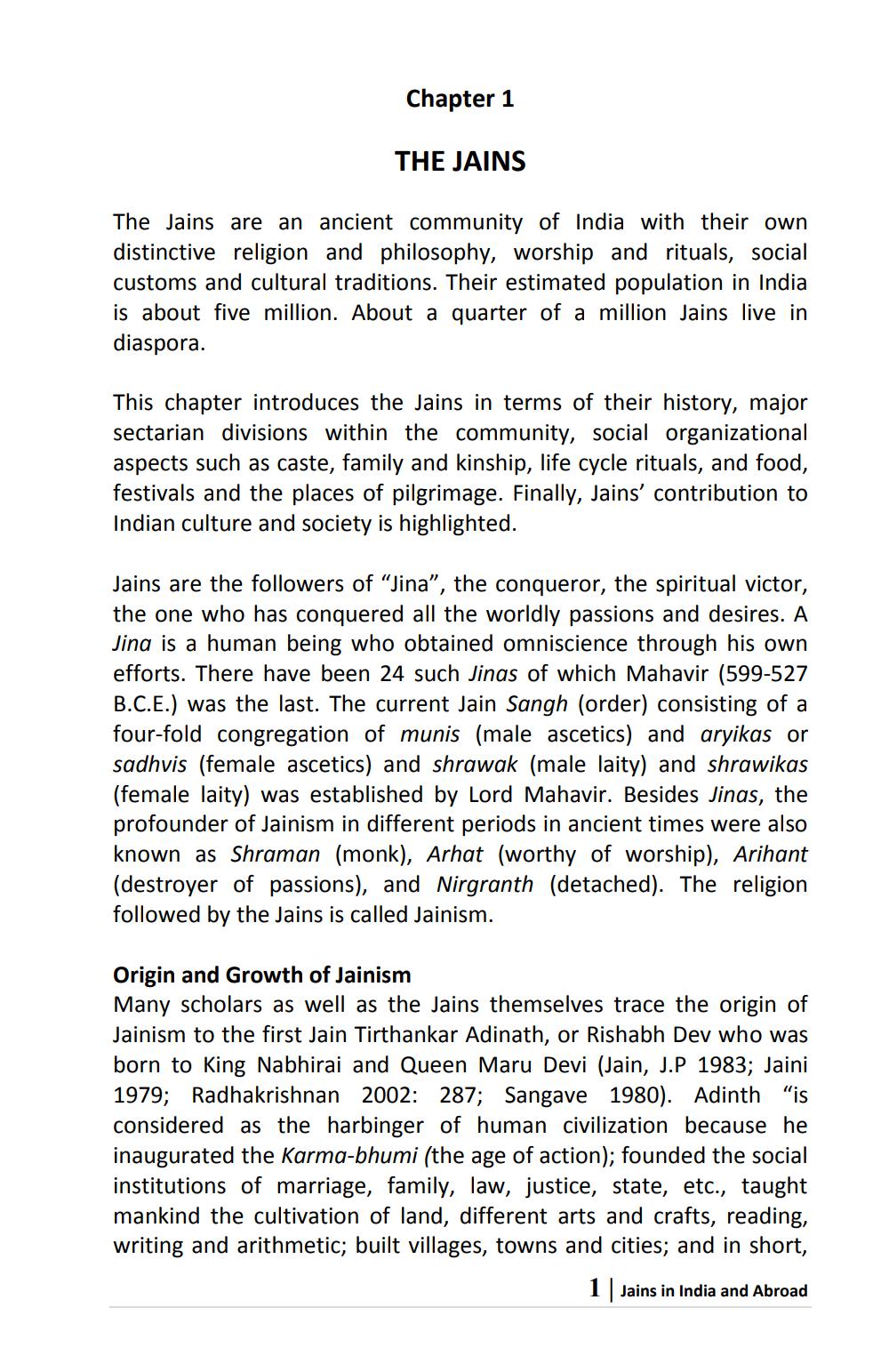________________
Chapter 1
THE JAINS
The Jains are an ancient community of India with their own distinctive religion and philosophy, worship and rituals, social customs and cultural traditions. Their estimated population in India is about five million. About a quarter of a million Jains live in diaspora.
This chapter introduces the Jains in terms of their history, major sectarian divisions within the community, social organizational aspects such as caste, family and kinship, life cycle rituals, and food, festivals and the places of pilgrimage. Finally, Jains' contribution to Indian culture and society is highlighted.
Jains are the followers of “Jina”, the conqueror, the spiritual victor, the one who has conquered all the worldly passions and desires. A Jina is a human being who obtained omniscience through his own efforts. There have been 24 such Jinas of which Mahavir (599-527 B.C.E.) was the last. The current Jain Sangh (order) consisting of a four-fold congregation of munis (male ascetics) and aryikas or sadhvis (female ascetics) and shrawak (male laity) and shrawikas (female laity) was established by Lord Mahavir. Besides Jinas, the profounder of Jainism in different periods in ancient times were also known as Shraman (monk), Arhat (worthy of worship), Arihant (destroyer of passions), and Nirgranth (detached). The religion followed by the Jains is called Jainism.
Origin and Growth of Jainism Many scholars as well as the Jains themselves trace the origin of Jainism to the first Jain Tirthankar Adinath, or Rishabh Dev who was born to King Nabhirai and Queen Maru Devi (Jain, J.P 1983; Jaini 1979; Radhakrishnan 2002: 287; Sangave 1980). Adinth "is considered as the harbinger of human civilization because he inaugurated the Karma-bhumi (the age of action); founded the social institutions of marriage, family, law, justice, state, etc., taught mankind the cultivation of land, different arts and crafts, reading, writing and arithmetic; built villages, towns and cities; and in short,
1 Jains in India and Abroad




